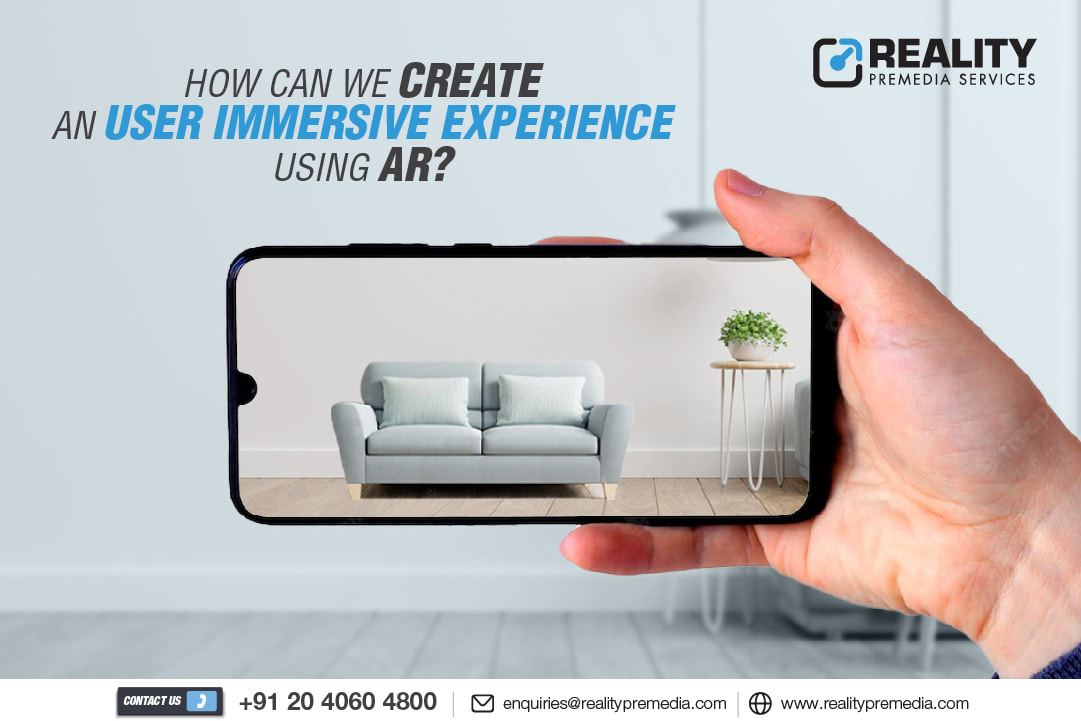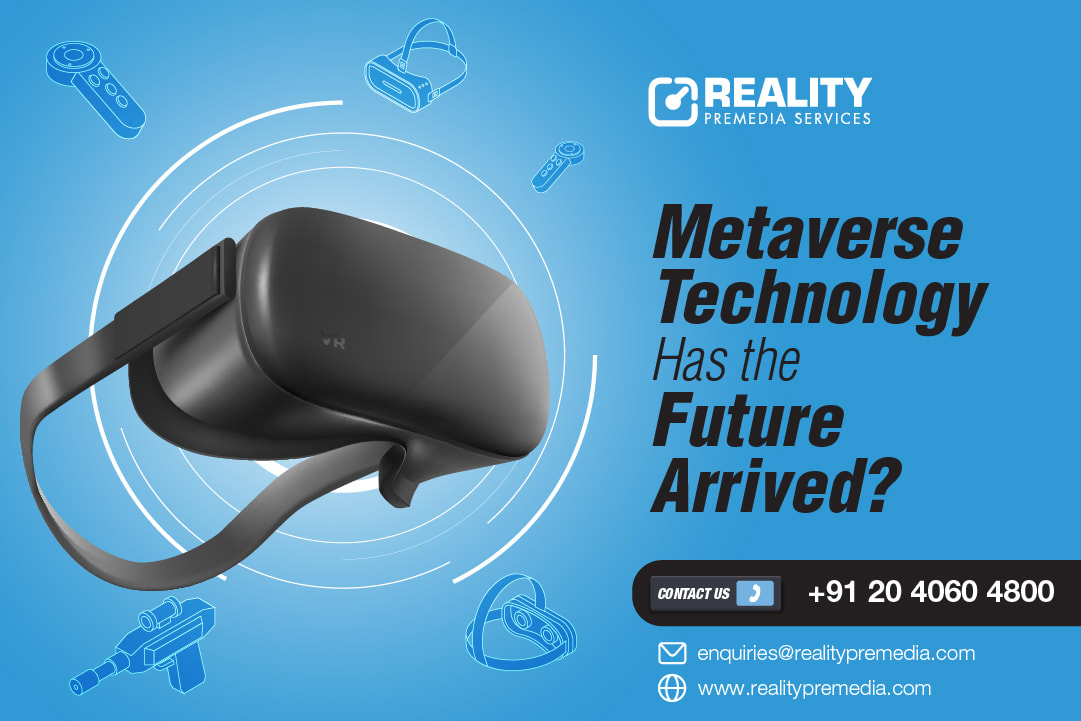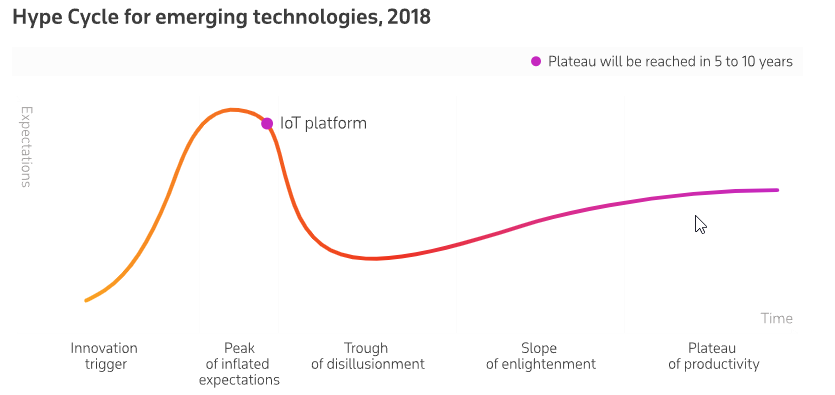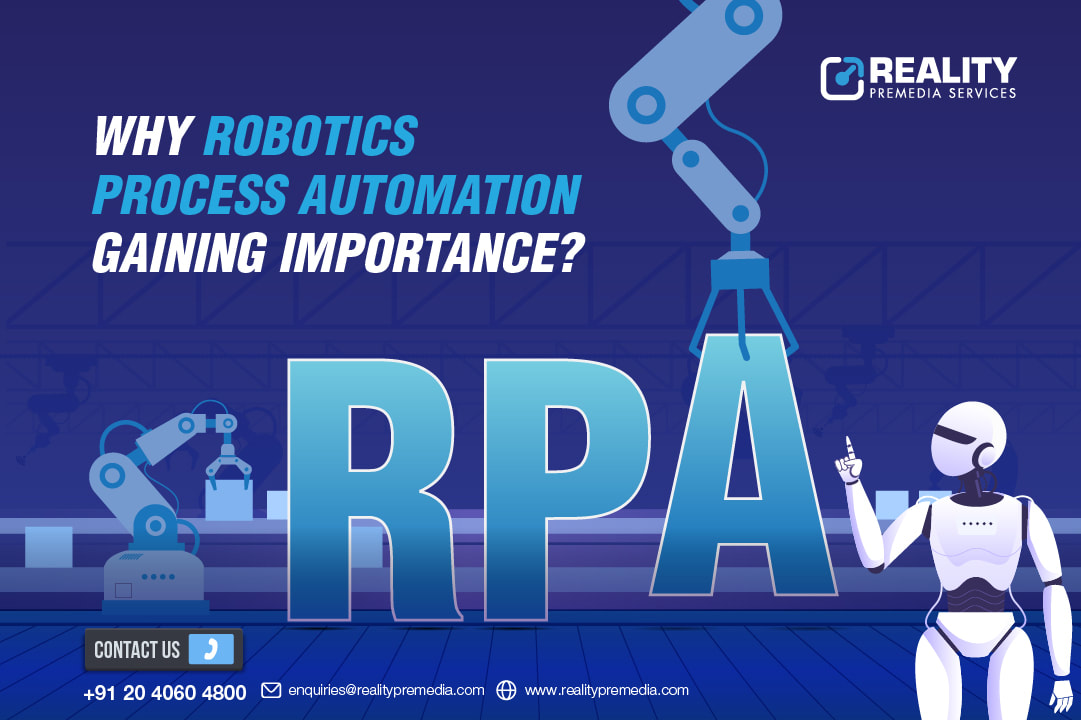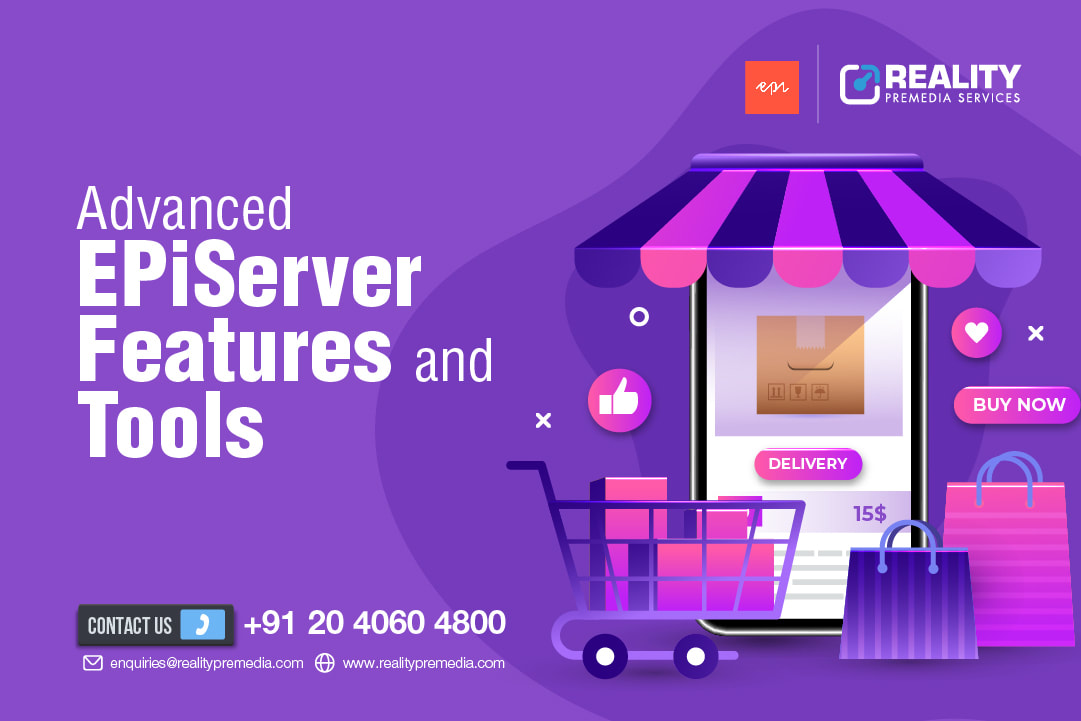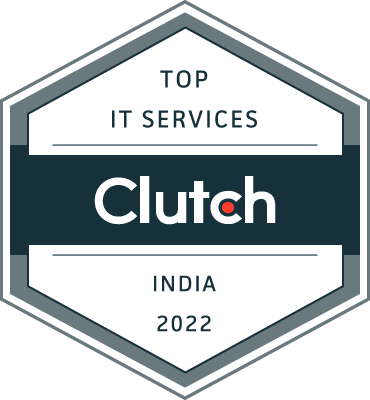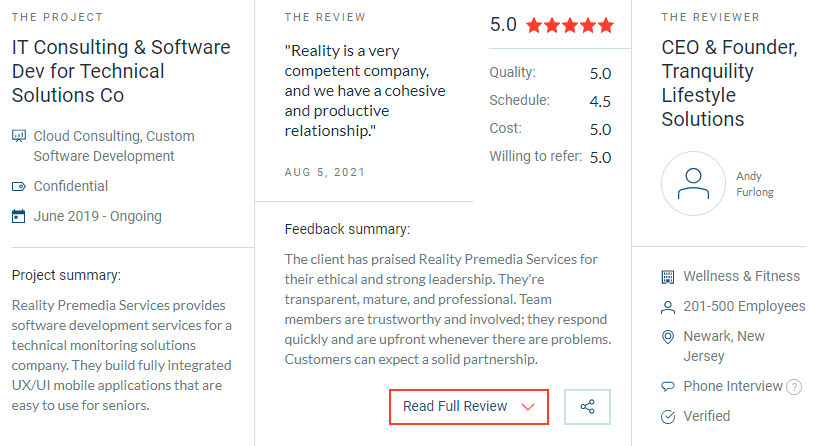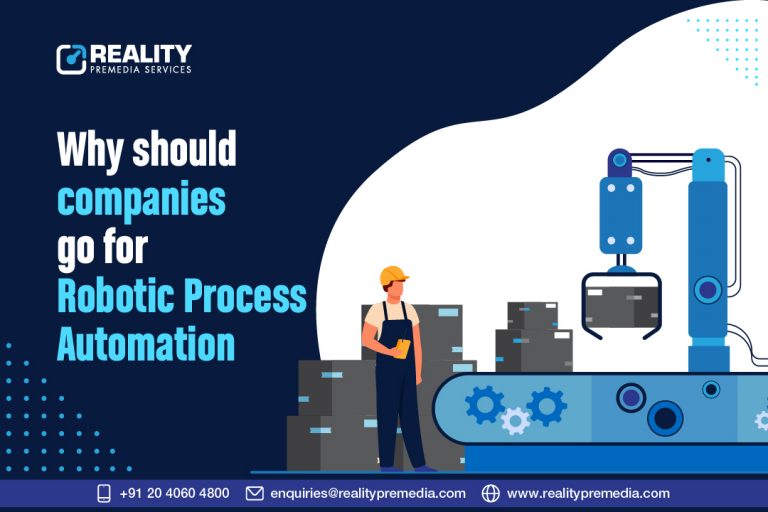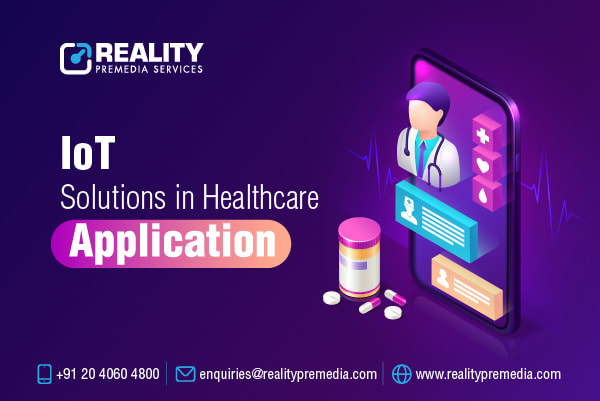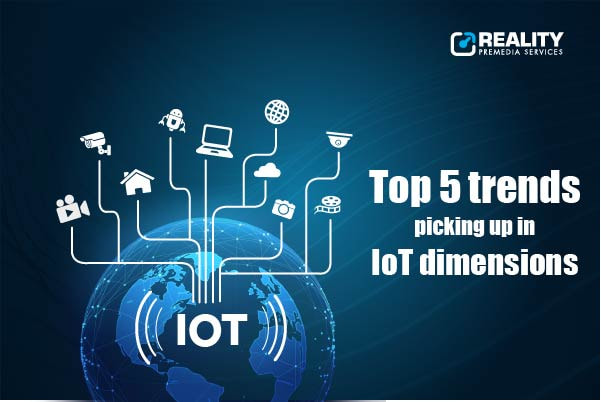|
Back to Blog
Unlike the full immersion experience of virtual reality, augmented reality aims to make the world you already see more fun. Augmented reality or AR is when digital information is overlaid onto the actual physical world. Your camera detects a target image, and can figure out the distance of the image, and at what angle the target is from the camera using lengthy algorithms and multiple sensors. It then projects the intended digital information onto that target image, and voila - augmented reality. All of the technology involved in this process is usually taken care of by an AR service provider who uses APIs to link this technology to an application.
Sounds complex right? Let us explain that to you in simple terms with a specific use case. Let’s say you’re looking to buy a sofa for your room, from an app. Now the problem is you can't actually tell if the sofa fits and suits in your room by just looking at the pictures of a sofa. This is where AR or augmented reality comes into play. You can simply open your camera from the app, point the camera towards your room, where you would like your sofa to be, and the app automatically detects and calculates the measurements of the sofa and projects the image of the sofa onto your room images. All these images are in accurate proportions, which make it look very realistic, as if the sofa is actually in your room. This helps you decide on how the sofa will look in your room before you buy the sofa. Now that you have a fair idea of what AR is and what an ideal use case for AR looks like, let's dive a bit deeper and get to know about what all interesting AR services are available in the market and what the top AR companies and AR service providers are building and how can we create a user immersive experience using AR. One of the most used and people’s favorite AR companies is Snapchat. It is an app where users can use fun filters on selfies to alter their faces to look like an animal/object/character and forward these pictures to have fun with friends and family. The top Augmented Reality companies right now are Meta, Snapchat, Google and Nvidia. AR can be used in all fields from Education, Gaming, Automobiles, Defense, Fun & entertainment, Shopping websites, etc. The use cases are endless. One of the best augmented reality companies in India is Intellify which makes interesting use cases for other product-based companies. AR has been proven to be a very substantial technology which acts as a good middle ground between reality which can seem bland, and virtual reality which can get too immersive. AR comes in with the best of both worlds. AR is feasible and easily accessible because it can be run quickly within your phone and doesn't require any external gear or device, unlike virtual reality which requires you to wear a headset and can act as a huge entry barrier for most people. Here’s how can businesses can use AR to create a user immersive experience:
It’s high time businesses realize the importance of user immersive experiences and how they can use these technologies to their advantage by collaborating with augmented reality solutions providers to create the next big market trend and create a benchmark.
0 Comments
Read More
Back to Blog
The concept of connecting a virtual environment to the physical world is buzzing in the industry. You might have heard of “metaverse”. Yes, with the advent of the metaverse the future has arrived and is combining the aspects of two worlds.
Have you ever thought of a world where you can virtually shop, play games, visit water parks, or work remotely? This technology allows you to virtually accomplish the above activities without actually performing them. Furthermore, after the pandemic, there is a rise in demand for interactive ways to associate remotely with people. It presents immersive spaces for people to remotely participate in team meetings or games using their digital avatars. Broadly speaking, this idea has transformed the way we used to interact with technology. This technological innovation is inevitable and asserts reliability. It is the biggest technology trend of 2022 and various tech giants are inclined to offer this immersive virtual experience. According to Gartner, by 2026, 25% of people will spend at least one hour/day in the metaverse for entertainment, shopping, or education. Top AR service providers, IoT service providers, and tech companies are integrating cutting-edge technologies like AR, VR, AI, IoT, and Blockchain to empower the growth of the 3D digital model. Ultimately, the modern era of the internet has begun where “metaverse” is synchronizing itself with the ever-changing industry needs of top AR service providers, blockchain industries, and the IoT market. Evolution of the technology As the concept is advancing, it's scaling up beyond shopping or video games. This multi-dimensional innovation is offering prospective features like digital avatars, shared digital spaces, and decentralization. The augmented reality services sector is more minded to understand this technology and determine its influence on their business framework. Metaverse technology is leading to tactical business transformations. Various online platforms and giant techs are at the forefront to incorporate metaverse with businesses and people. It possesses the potential to become a universal digital platform. It may also tend to emerge as a source of providing valuable data to the businesses about their customers. Due to its extensive evolution, businesses are willing to invest in digitally enriched immersive worlds. Irrespective of the industry type, every small or large enterprise is cognizant of the metaverse features. Identifying and interpreting its technical aspects will help industries to implement future projects. Industries embracing “metaverse” using various technologies The technology is opening new doorways to digital experiences and extending possibilities in the software, entertainment, and education industry. It is advancing the scientific research methods in manufacturing and healthcare. Virtual business development is a prominent choice for investors and entrepreneurs to keep pace with the business trend. It has revolutionized the industries such as eCommerce & retail, manufacturing, and architecture & engineering.
In a nutshell The idea of the metaverse is continuously growing and incorporating potential attributes like privacy and authentication. However, the pre-developed features are already providing dramatic impressions and bringing them into reality. Its decentralized behavior is remodeling the digital world operations. It has limitless potential and a promising future. Tech-savvy’s are endeavoring us to set our foot across the internet and experience real-time instances. Experts say “within 10 to 15 years, the metaverse will be a $30 trillion industry.” Experts are examining and exploring the “metaverse” to develop a plan of action and remodel the digital future. Our dream of decades of a virtual world is on the way.
Back to Blog
Moving to cloud? Things you should know5/31/2022 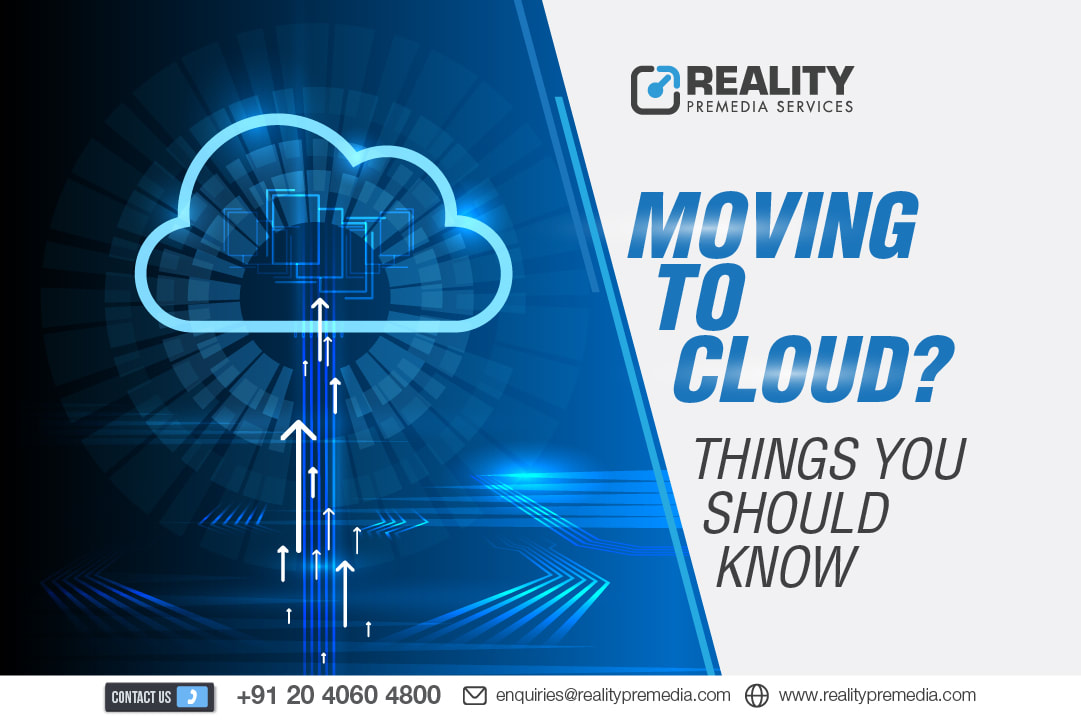 COVID-19 sparked a surge in digital transformation efforts this year and last. Whether it's cloud computing services firmly establishing itself as a ‘remote work enabler,' or multi-cloud and hybrid clouds assisting businesses with business continuity, the future is bright for cloud computing. Because of the advantages of cloud computing, an increasing number of businesses are adopting a "cloud-first" policy, which means they choose cloud computing solutions when they require new services. According to research, cloud solutions will become more popular across industries. As per IDC, cloud computing service provider will account for more than $1 trillion in commercial IT investment by 2024. Between all this planning and reaping the rewards, there is one final step to consider: cloud migration. Many businesses are hesitant to take this step because of concerns about over-provisioning, skills shortages, adoption issues, and downtime. To help you decide, we’ve listed important things below that you should be aware of before jumping in for cloud migration. Goals Cloud migration generally improves scalability, agility, security, and efficiency while allowing for speedier software development. However, each company may require the cloud for various reasons. For example, a financial institution would require it to boost processing power, scalability, and security. To achieve the best business value from cloud adoption, you must first anticipate your demands. Security How secure is your cloud data? To avoid being on the wrong side of a lawsuit, find a trusted cloud service provider before handing over ownership of your intellectual property. To ensure that the company's data is secure, security problems should be addressed at the outset of any cloud plan. Amazon Web Services, for example, is a trusted cloud service provider that follows best practices to protect users' data on the AWS Cloud. AWS Security Best Practices has more information. Data location What will happen to your data? It's critical to store your data somewhere that isn't contractually locked because retrieving data is incredibly tough. Choose a cloud station that allows you to move around freely, quickly, and with visible progress indicators. Disaster recovery What is your backup strategy and how will your cloud computing service provider help you out of a crisis if your cloud computing system goes down or suffers a disaster? Employees and clients must still be able to access company data to ensure business continuity. Businesses should understand what defines an outage and when financial consequences should apply for any level of downtime. Scalability Everything has an upper limit. A cloud application is scalable, with a demand- based "pay as you go" method, yet even the cloud has limitations. Focus on several "ceilings" such as organization, storage, people, technology, and cost when developing a cloud plan to decide how much and how far your application can scale. It's also critical to check your existing software's compatibility with the cloud. Reliability It's crucial to learn about your vendor's margin of error, power outages, and security concerns. Keeping track of cloud service accessibility and availability can also help you choose the best cloud service provider for your company. Another crucial issue is to provide your personnel with the necessary skills to effectively use the cloud. This will make the transition to the cloud go more smoothly and help you achieve your cloud goals. If you have any concerns, speak with one of our specialists right away. Contact us - enquiries@realitypremedia.com +91-20-4060-4800 +1-551-333-1480
Back to Blog
IoT Then & Now5/25/2022 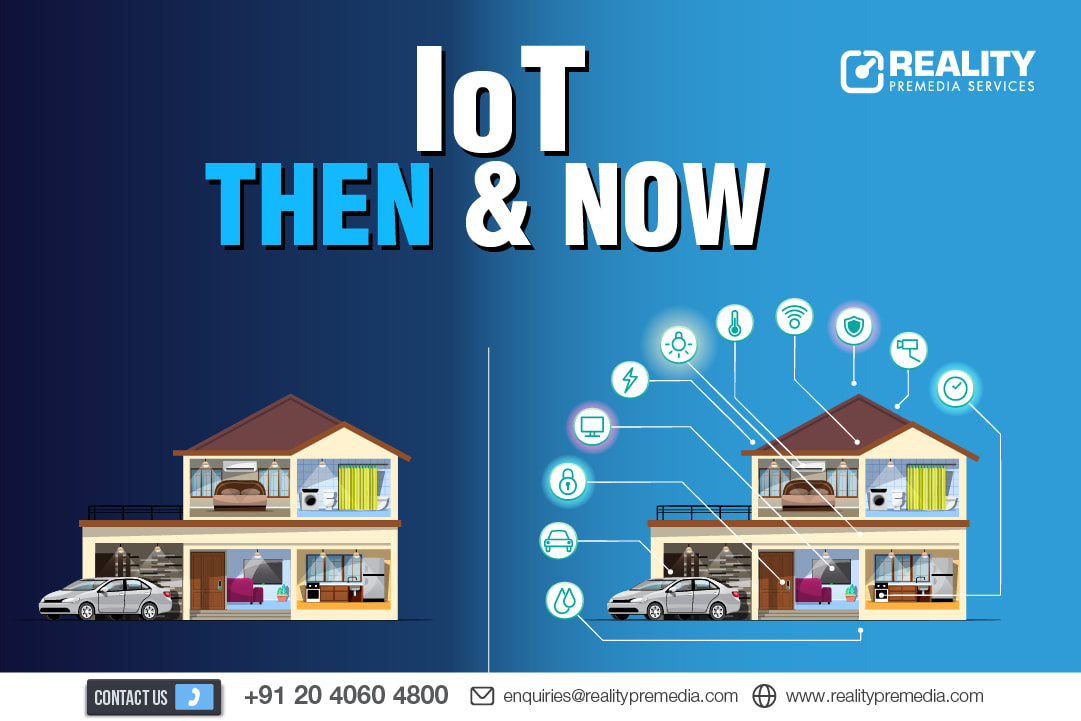 One of the most significant IT innovations in recent years is the IoT. In our daily lives, all of us rely on a range of technologies, which is everywhere, from waking up to a mobile alarm clock to playing music by uttering 'Alexa’; but how did it all begin? How far has it come? What will the future hold for it? What is the role that IoT app development companies play in it? Let's see... Then: The timeline of significant events in the growth of IoT is depicted in the info-graphic from HQ Software. Kevin Ashton, co-founder of MIT's Auto-ID Centre, is credited with coining the term in the 1990s. His concept was to connect devices using RFID technology. Nowadays, the IoT service providers predominantly use IP networking to communicate between devices. The RFID concept proposed by Ashton failed to gain momentum. Instead, in 2000, the first internet-connected refrigerator was released, which used a LAN connector to connect to the internet. More information about that, as well as other devices that came in the 2000s, can be found in the Wikipedia entry. Some claim that it really took off in 2009, when Google started testing self-driving cars. A year later, China emphasized the IoT as critical to addressing financial difficulties. In 2015, the Global Standards Initiative was established, and governments began to consider IoT security in 2017 Now:
In 2019, there were 9.5 billion active IoT devices, which was substantially larger than expected. IoT connections grew in 2020 because of the use of laptops & computers. From thermostats to autos, all types of gadgets are now connected to the internet. Many things have contributed to this, including the growth of networking capabilities. The rise of the cloud has been maybe the most important cause. IoT devices have since grown far less expensive, with cloud servers providing massive storage capacity. Future: According to Statista, by 2025, the total number of installed connected devices will be 75.4 billion worldwide. This represents a fivefold increase since 2015. These figures suggest that the future of IoT development services will be more innovative and revolutionary than the present. It seems inevitable that IoT will be adopted by a growing number of domains. Let's look at some of the IoT trends that will shape the future: 1. 5G integration: Existing networks' capabilities would be greatly enhanced by 5G. The current network would not be replaced by 5G, but rather enhanced. 5G, whether old or new, would allow for lightning-fast data transmission to and from cloud servers. 2. Single interface: As previously stated, an increasing number of devices with various capacities are joining IoT networks every second. Instead of a basket of remotes and interfaces, individuals and businesses would require a single interface that allows end-to-end access. 3. Multi-level privacy and security Data privacy and security will become increasingly more critical. Data security has traditionally been implemented at the device level, whether it's a smartphone, laptop, or other smart device connected to an IoT network. Privacy and security protections will be introduced at several tiers between IoT endpoints in the future. 4. Shift from products to services ecosystem The data generated by any IoT system is its primary driver. Companies that produce products would gradually shift to delivering services based on data insights. Advancements in three technologies; Cloud Computing, Big Data, and Artificial Intelligence have aided the rapid rise of IoT. The IoT appears to have a bright future. 5G is poised to significantly disrupt the IoT by bringing high-speed transmission capabilities to both existing and future IoT networks.
Back to Blog
2022 will be the year that businesses get back on track after a year of unparalleled disruption. Many will be looking towards technology and automation to improve efficiency, reduce costs, and build organizational resilience. One technology that should be at the forefront of those conversations is robotic process automation (RPA). Robotic Process Automation (RPA) technology, although a relatively new technology, has managed to gain a lot of attention in the corporate world over the past couple of years. Business owners and CTOs alike are beginning to take notice. Robotic process automation (RPA) offers several benefits over traditional automation solutions. It enables us to save costs and free up resources with a low, non-invasive technical barrier. Other advantages include increased productivity, higher accuracy, the ability to streamline regulatory compliance, faster service, and higher consistency.
RPA revenue was expected to reach close to $2 billion in 2022, according to Gartner, and will continue to grow at double-digit rates through 2024. As more and more companies around the world employ RPA, it is swiftly becoming a ubiquitous and critical technology for the competitive company. Low-code and no-code solutions are helping organizations accelerate digital transformation by allowing non-developers and non-IT specialists to participate. Accounting and invoicing, data management, hiring and on-boarding, payroll, and much more can all be aided by it. Specifically, RPA is mainly used to automate business processes such as:
Finance, accounting, operations, and technology groups are all adopting RPA, which is a rapidly growing business. According to LinkedIn estimates, 72 percent of all firms are expected to employ RPA at some time in the next two years. Major Benefits of RPA Cost effective Cost savings are virtually instantaneous using RPA. Reduced manpower and time, as well as better precision, are all advantages of RPA. Cost reductions of over 30% can be gained by automating tasks. Reduced risk By providing scalability, reducing errors, and boosting compliance, RPA may drastically minimize operational risks. To get more consistent results and delivery, automation is essential. Improved Productivity Because RPA can automate repetitive and time-consuming processes across your organization, your employees will have more time to focus on more important duties, enhancing overall productivity. This leads to increased staff happiness and engagement, as well as a better customer experience. RPA Bots may work nonstop for 24 hours a day, 7 days a week. This is a significant benefit over human workers. For firms trying to improve efficiency, the ability to work uninterrupted and with greater accuracy is a significant benefit. High accuracy When done correctly, robotic process automation decreases the likelihood of errors in any given operation by effectively replacing the human "error" factor. Less errors mean lower costs, less wasted time, higher accuracy, and, depending on the process, increased regulatory compliance where errors can have serious consequences (e.g., personal data related tasks) and much more, which brings us to regulatory compliance. Start Your RPA Journey Today During unpredictable times, automation is a crucial tool for making your business more efficient and stable. RPA is one of the most straightforward methods to set up and scale to new activities and departments. Consider hiring a seasoned RPA Solutions provider like Reality Premedia Services if you're interested in RPA initiatives for your company.
Back to Blog
Advanced EPiServer Features and Tools4/22/2022 EPiServer is a content management system that allows developers to create and deliver content through a single interface. Users may manage, optimize, and build the digital experience that best suits their client base using EPiServer’s interface.
EPiServer is a cloud-based digital experience platform that helps medium-to-large businesses manage content and market online. Customer personas, data backup, brand management, engagement tracking, lead conversion, and third-party connectors are all important aspects. EPiServer includes a centralized dashboard that allows administrators to examine content, product information, and campaign information. Teams may handle catalogues, orders, customer data, and payments across several areas, enhancing the customer experience. Managers may utilize artificial intelligence to build tailored customer journeys by combining content and product data . A/B testing, lead generation, and project collaboration are all included in the solution. EPiServer provides a Service API that allows third-party systems to integrate with EPiServer for marketing automation, search capabilities, personal information management, and other purposes. Managers can customize the programmed and construct a content delivery network for various websites using the built-in visual studio. Users can use the system's interface with Microsoft Dynamics to speed up the launch of digital products. Advanced features & tools Optimized search results It optimizes search results and displays the most relevant material to visitors using historical search data. As the website grows and search-related data accumulates, it is used to increase the relevancy of search results and to generate search suggestions based on previously searched terms. The search data can also be combined with other user information to provide users with customized search results. Tag pages with synonyms of a term to ensure that relevant sites are displayed even when a user searches for non-matching text. Best bets This feature allows you to customize or tag search results for display at the top of the results page in order to promote specific pages or content. When you're trying to structure a landing page or promote specific sites as part of a marketing effort, this functionality can come in handy. The current state of each page included in the search results is displayed by Best Bets. This makes it simple to spot pages that haven't been published yet or have passed their expiration date. The status is updated in real time, and any changes made by administrators are reflected immediately. Smart list block Webmasters can use the Smart List block to present a smart list of information or items from throughout the site for a particular search criterion. This type of search block customization can be used to promote certain content, such as products on an e-commerce site. The smart list is built dynamically depending on the user's current page views and encourages them to explore more of your website. Adaptive navigation To offer targeted and personalized content to visitors, this relies on visitor segmentation. Find can refine search results based on personal preferences, previous browsing history, previous purchasing history, and other factors. Additional links that may be of interest to the user are presented using the same data. Multi-dimensional navigation allows a website to offer pages from several locations, allowing a visitor to view a certain page via any path available. All of these factors contribute to increased user engagement, which can lead to increased conversions. Adding an easy and effective search functionality enabled by EPiServer Find is all you need to keep visitors hooked on your website at a time when online retail stores are reporting an incredible 74.6 percent rate of cart abandonment.
Back to Blog
When our company began in 2009, we had a vision of becoming a single destination for any company that wanted to transform their business. We’ve honed and perfected our operations to be as effective and efficient as possible. After all that work, we’re now seeing concrete results as we’ve just been named as a 2022 top IT service provider in India by Clutch. Clutch is an online review and rating platform that primarily serves the B2B industry. They employ a unique verification process that helps them determine if the content sent to their publication comes from legitimate and authentic sources. Clutch provides companies with the opportunity to raise their status within their respective industries through these awards. Companies only need to earn as many high-quality reviews from their clients within the given time frame to get it.
Our team has been working hard every single day to ensure that our clients get the results they need. The fact that we not only accomplished that to their satisfaction, but to the extent that they gave us positive feedback that led to an award is mind-blowing. We’d like to take this opportunity to thank all of our partners who had a hand in making this accolade possible for our team. It’s only through their continued support and patronage of our services are we able to make a positive difference for all those that choose us as their vendor. We will work even harder to meet the heightened expectations that will surely be put on us after winning this award. Our team is ready and willing to meet and exceed them in the coming months. Visit our website to learn more about the services we offer and feel free to contact us directly to begin your next project today.
Back to Blog
Why Companies Need Robotic Process Automation Now!
There’s no doubt that almost anything today can be done by a computer. If that’s the case, why do we humans find ourselves working more than ever; blurring the lines between work life and personal life; and most importantly facing the probability of burning out, on a daily basis? Makes you think, doesn’t it? At Reality Premedia, we’re in the business of working with machines, not like machines. And one way to do that is for companies to adopt Robotic Process Automation (RPA) now! Let’s take a closer look. What is Robotic Process Automation (RPA)? Believe it or not, most people are actually already familiar with RPA, without even knowing it. Remember the last time you called your mobile operator or your bank and were greeted with an Interactive Voice Response System (IVRS); that was an example of RPA in action. Or even when your doctor sends you text messages reminding you to visit. These are just the tip of the iceberg. RPA is a system by which humans can instruct machines to execute repetitive time-consuming manual tasks. The term ‘robotic’ in RPA, refers to software robots. These robots aka bots are designed to imitate the way humans interact with computers performing our tasks with more speed and efficiency. Combined with some aspects of artificial intelligence and machine learning techniques, the scope to use RPA in business is massive. This along with greater levels of sophistication has made RPA popular across every sector of work. Why Does My Business Need RPA in 2021? The most drastic change that came about from the pandemic was the need for organizations to move their business and backend processes online; most managed to do so quite well. Fortunately or unfortunately, this digital revolution is here to stay. That means that companies need to find a permanent solution, quickly. RPA is Easy to Implement: RPA systems are designed to make work easier for everyone, including developers. These programs use comparatively less coding, so they can be implemented sooner and non-technical staff can adapt to them easily. They also do not require any changes to the existing IT setup because they work as an add-on to current applications. The other aspect that makes them easy to implement is the fact that they can be implemented in phases. This allows companies to begin by automating just a few simple tasks before they take on more crucial processes. As the world faced communal grief, anxiety, and depression, workers across the globe experienced a shift in perspective. Along with one’s physical health, mental health took precedence over all else. RPA Boosts Employee Morale: Any job no matter how exciting comes with its share of the mundane. RPA systems were created to eliminate this. By automating high-volume repetitive tasks, it allows employees to focus on the more important, strategic aspects of the job. The recent increase in the popularity of online courses shows that employees are eager to up-skill themselves. By implementing RPA, they will have more time to do this without affecting their productivity. This doesn’t just boost morale and improve mental health; it increases the bottom-line of organizations as well. Speaking of the bottom line, the pandemic drastically affected everybody’s bottom line, irrespective of sector. Now, companies are not only struggling to survive, they need to make up for the losses they faced. RPA Increases Customer Satisfaction & Revenue: You might be wondering how automating simple internal tasks, can increase customer satisfaction. RPA does this in two ways. As mentioned above, creating time for employees to focus on high-value tasks helps them finish more work in less time, giving them the time to attend to customers better. Additionally, RPA eliminates human error altogether, as long as it is programmed correctly. When a bot does a repetitive task, it doesn’t face monotony, needs a break, or makes silly mistakes that could cost the company a lot of money. The end result is an optimized, highly efficient workflow process. The pandemic brought with it pandemonium. Lockdown rules & regulations were and are constantly being changed; rules regarding businesses, whether essential or not are also in a state of flux. And to make matters worse every person who interacts with a business today has embraced technology and expects the same from a business. RPA Improves Accuracy & Compliance: All these changes have increased the risk of both human error and fraud. RPA helps businesses log each step of their work, ensure they follow the latest compliance rules and helps them find & fix errors quickly. From the depths of data, RPA also helps companies extract & manage the most relevant high-quality information, making accuracy a part of day-to-day operations. As we experienced heart-warming stories of people going out of their way to help complete strangers, perhaps the most important lesson the world learned the hard way, was how to work together. RPA Helps Organizations Work Cohesively: With the right programming, RPA bots can easily correct errors amongst multiple departments within an organization. Take, for example, filling up a form. If your form is missing some data or something is filled incorrectly, the form is returned to you. With RPA however, if the data exists somewhere within your organization, the bot can fill it up automatically, essentially omitting the need for one form, to be checked by multiple departments. RPA has the potential to transform the post-pandemic world of work, permanently. As you can see these bots are designed to enhance our productivity. After all, work only works when you’re happy at it. Contact us to begin your journey with RPA.
Back to Blog
IoT Solutions in Healthcare – Applications10/26/2021 The internet of things, or IoT, is a system of interrelated computing devices, mechanical and digital machines, objects, animals, or people that are provided with unique identifiers (UIDs) and the ability to transfer data over a network without requiring human-to-human or human-to-computer interaction.
We can consider an IoT healthcare facility as a collection of ubiquitous computing that mainly deals with external activities. In healthcare, IoT-based healthcare systems collect a variety of patient data and get inputs from doctors’ medical professionals. Continuous glucose monitoring for insulin pens is the best example of this. Applications of IoT solutions in healthcare 1. Tracking Staff, Patients, and Inventory IoT tracking in a healthcare facility is a process of keeping track of the hospital’s physical assets including staff and patients. The usage of IoT tracking in medical surroundings is also referred to as “indoor GPS”. IoT majorly uses the technology of RFID tags (Radio-Frequency Identification) to track and monitor healthcare assets. The purpose of IoT tracking in the healthcare industry is to make well-versed decisions and provide on-time treatment. Tracking through IoT healthcare applications enables real-time alerting, and monitoring. All of this enables them to offer accurate treatments and improved patient care. 2. Remote Patient Monitoring System A remote patient monitoring system is one of the best IoT healthcare applications used widely across the globe. IoT-based remote patient monitoring system is an extension of medical systems, where a patient’s vitals can be monitored remotely. Currently, remote patient monitoring systems have been developed using low-power dedicated miniaturization sensors with the sole purpose to monitor EKG, SpO2, temperature, and movement. 3. Robotics and Healthcare Automation Robotics and healthcare automation are also facilitated by performing integrated duties using the field of mechanical and electronics. The ultimate purpose of automation in healthcare and the use of robots is medically intervening, rehabilitating, and care for patients. Surgeons can perform complex procedures, by deploying small Internet-connected robots inside the human body, that would be difficult to manage using human hands. At the same time, robotic surgeries performed by small IoT devices can reduce the size of incisions required to perform surgery, leading to a less invasive process, and faster healing for patients. These devices must be small enough and reliable enough to perform surgeries with minimal disruption. 4. Smart Hospitals Smart hospitals are medical facilities that use IoT applications to monitor the health of patients, saline levels, blood pressure, and control vitals from a distant position. Smart hospitals operate mainly on IoT applications that can monitor the patient and generate an alarm if the condition of the patient is deteriorating. An IoT healthcare app development company can especially build IoT applications for Smart Hospitals based on their requirements. The goal of smart hospitals is to develop, design, and construct new clinical processes using IoT applications. Smart hospitals optimize management systems as well as digitize networking infrastructure with advanced IoT healthcare technologies to provide a valuable service. 5. Hospital Information Management System IoT-based hospital information and management systems provide a common source of information about a patient’s health history. IoT applications connect physical and analog devices through the internet, with the use of actuators and sensors to gather data. This data is stored in hospital information and management systems and analyzed by medical staff. IoT-based hospital information and management systems handle different directions of medical workflows. Hospital information and management systems improve healthcare performance along with administrative, medical, legal, and financial control. IoT changes the way facilities are delivered to the healthcare industry. IoT app development companies can improve the product, causing a larger effect by bringing together minor changes.
Back to Blog
Top 5 trends picking up in IoT10/6/2021 Introduction The internet of things IoT is one of the most prominent tech trends to have emerged in recent years. Today, more businesses like IoT app development companies are taking advantage of the benefits of IoT than ever before. In simple terms, it refers to the fact that while the word internet initially referred to the wide-scale networking of computers, today devices of every size & shape, from cars to kitchen appliances to industrial machinery, are connected & sharing information digitally on a global scale. As with every aspect of our lives, the global coronavirus pandemic has undoubtedly affected the way this trend is developing & impacting our lives. In a world where contact between humans is, for now, more limited, contact between devices, tools & toys can help us remain connected. Healthcare investment in IoT to Skyrocket From telemedicine to automated home help for the elderly & disabled, smart wearables, sensors & connected devices will continue to change the way healthcare is delivered. It will also be used to minimize unnecessary contact in situations, where the risk of viral contamination is particularly high, for example, care homes & infectious disease wards within hospitals. This trend will undoubtedly continue upwards during 2021 now that infrastructure & patient awareness of the advantage is in place. Strong growth has also been seen in the market for devices that will allow the elderly to remain independent in their own homes for longer. This will include tools utilizing AI to detect falls to changes to regular daily routines that could alert relatives or healthcare providers that intervention could be required. IoT means more productive WFH Work-from-home (WFH) is the latest normal for many of us in the information economy in current times due to safety concerns encompassing massive numbers of people gathering in offices and city centers. With AI-powered personal assistants like Alexa now placed in many of our homes, we can expect more devices designed to aid us in operating our day while working remotely. This will involve more intelligent computerized scheduling and calendar tools, better quality, interactive video conferencing, and virtual meeting technology. Microsoft’s Virtual Stage platform, for example, uses its Azure Kinect sensors to enable immersive, AI-powered presentations that will keep us better engaged. IoT in Retail sector As we noticed in the initial times of the COVID crisis, several non-essential stores were tentatively shut down with insignificant disturbance to our lives – thanks to online retail evolution. However, stores supplying essentials like food and medicine must remain open to serve the basic needs of local populations. Overhead the following year, we can foresee a new direction for innovative models such as Amazon’s fully automated supermarkets that cut down on the need for non-vital human interaction as we stock our homes with food and other essentials. Automation through IoT-enabled devices will also continue to grow in the extensive fulfillment centers that dispatch inventory to stores. Contact-free payment systems will also grow frequently prevailing as we progress further towards the “cashless society” that has been foretold to arrive for some time soon, inducing its own hurdles. Other developments in retail will entail the use of RFID tags to track the movement of customers around stores. As earlier, this will be used to make choices over stock deployment and foodstuff by registering how and when patrons interact with displays and products on the racks. IoT in smart cities According to PwC, Smart city development is poised for growth over the next seven years. By 2025, the market for this technology will reach $2.5 trillion. Smart cities are second in line for 5G implementation after industrial IoT. This will allow for a stable network with enough bandwidth capacity. The connectivity diversity for smart city solutions is among the top issues for technology. Data is the most intriguing element. Smart city data is mostly public and can be collected much more quickly than data required for smart home systems. Therefore, an opportunity is there for onboard AI in combination with IoT to prove successful. For example, the Roads and Transport Authority in Dubai utilized AI for crowd management at metro stations. IoT at the edge The adoption of edge computing will become more significant for the Internet of Things devices to conquer the cloud computing drawbacks such as latency issues and low bandwidth faced in the real-time data processing. Edge computing is an accurate data processing and cost-efficient method for IoT devices. Companies should make decisions based on IoT information speedier than ever before to appreciate the true device’s value on the network. With the union of 5G networks, an increase in IoT and IoT devices, and a striking increase in the data amount we are collecting, edge computing can be turned up as significant as ever in this year. 2021 promises to be another year of trouble and uncertainty around the globe and IoT technology will undoubtedly deliver practical solutions to various complexities and challenges faced by people working tenuously. |
Drop us a line
|

 RSS Feed
RSS Feed
